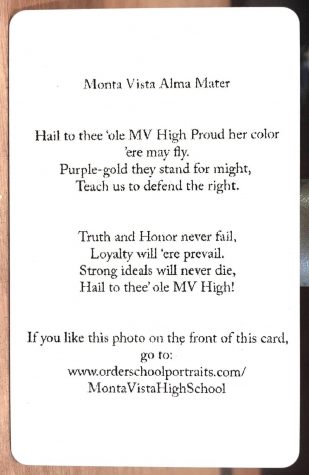MV’s got your back: The reason behind the suicide prevention lines on student ID cards
Why the new student ID cards contain suicide prevention information
September 16, 2019
When flipping over to the back of their ID cards, students were met with three faintly typed phone numbers in place of MV’s alma mater. These were the phone numbers of the National Suicide Prevention line, the 24-hour Suicide and Crisis line for Santa Clara County and the Crisis text line.


This information was printed due to a recently added legislative law for California which requires schools to print suicide prevention and awareness information for seventh through 12th graders. Student advocate Richard Prinz understands the value in providing this information.
“I think that’s something that would be good to have on hand for everybody just in case, either for themselves or somebody else,” Prinz said. “It shows that as a school we want people to be safe and healthy.”
Prinz hopes that this information will encourage students to open up about their issues and become aware of the resources they have around them. He also believes that, especially in instances when a student knows someone who might be entertaining suicidal thoughts, their problems should be addressed and assessed as soon as possible.
“That’s a situation where you have to say, ‘No, I’m going to tell somebody because you are my good friend.’” Prinz said. “And so if somebody is talking about suicide, it’s not confidential — we have to protect the person’s life. We have to do some assessment. We’d have to talk to the person and find out just how serious it is and get them help.”
Associate Superintendent Trudy Gross shares this sentiment, and wishes for students to feel as though they always have support in times of need.
“One of the main things that was emphasized there is that help is available,” Gross said. “We want people to know that suicide is very preventable, that … we can face crises, and there are ways to get help.”
Gross believes that MVHS has many resources and adults available to aid students, acknowledging that high school can be a very turbulent time. FUHSD schools, in addition to having a more than 20 year history of licensed therapists, also are equipped with administrative teams, teachers, school psychologists and guidance counselors.
“We want students to be able to focus on their academics, focus on … extracurriculars, focus on the arts, athletics, [and] get the mental wellness support that they need,” Gross said. “We’re always trying to not prioritize one thing over another, but be able to help students address their needs and also as much of their interests as they have.”
According to Gross, as the concerns regarding mental health and youth suicide have grown over the past few years, MVHS has attempted to address the issue using various methods. Last year, MVHS held a suicide prevention assembly and students took a wellness survey, which was used to evaluate the mental health status of the student body.
Although junior Esther Ng hasn’t dealt with severe mental illnesses or suicidal thoughts herself, she does feel that it is reassuring to know that the school cares about and is actively trying to help its students.
“I thought it was an interesting change,” Ng said. “And it’s definitely more effective than the little cards that they gave out, because I’m pretty sure most people — at least for me, I just used it as a bookmark and didn’t really look at it.”
In order to bring this information to the attention of the student body Prinz hopes to release an announcement on it.
“If you hear somebody needs these resources, then you can you can inform a teacher,” Prinz said. “Not just refer the person to ‘Oh, you should call you should look at the back of your card and call a resource.’ We need to look after each other, so if we hear if somebody’s [in duress] not just give them that advice, but [also] make sure that they’re there with somebody — they’re with an adult.”



















